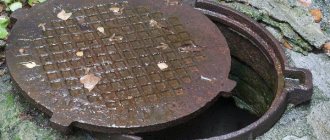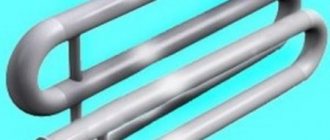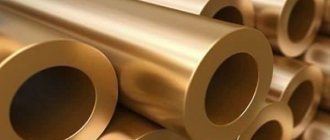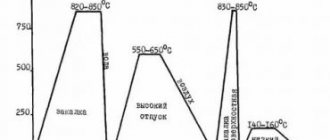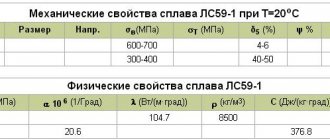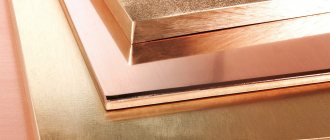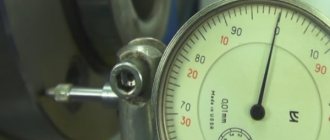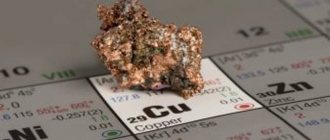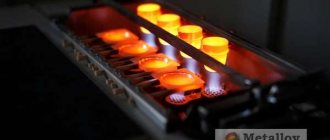What and how are bullets for rifled weapons made from? Currently, the industry produces a very large number of various types of ammunition. If previously almost all cartridges were made as carbon copies and had a very simple design, today the technologies for the production of small arms and cartridges have gone far ahead. Without exaggeration, we can say that the most talented designers and inventors are attracted to work in the military-industrial complex, and their activities are very well financed, which, of course, bears fruit.
A little history
The prototype of the bullet was an ordinary stone. Some may be surprised, but this is true. It was with this “projectile” that ancient people killed wild animals to get their own food. Only after many, many millennia, an unknown inventor figured out how to increase the killing power of the stone. People began to use the sling. The stone, which was spun on a leather belt, flew at a much higher speed than the stone that was thrown by hand. What were bullets made of in those days? There was no weapons production as such yet. “Bullets” (aka stones) were collected from the surface of the earth and put into action.
It was only in the tenth century AD that firearms appeared. Its homeland is Ancient China, where the bullet in our usual sense was first used. What was the weapon itself made of? The inventor used bamboo as a trunk - a fairly durable material. According to some reports, bamboo can withstand ten times the load when tensile tested than ordinary quality steel. Many people are also interested in what bullets were made of at that time. Surprisingly, in those days bullets were cast from lead. This material, like many others (for example, antimony, tin) has been known to mankind since ancient times. And ancient people appreciated the properties of lead, namely its low melting point.
Small arms have undergone significant evolution. In April 2013, an event occurred in Russia that resonated throughout the world and marked a new milestone in the development of weapons production technologies. We are talking about a statement by representatives of the Ministry of Defense about the abandonment of lead tracer bullets and the transition to the use of armor-piercing projectiles with a steel tip.
All copper bullets. Spiral of weapons history
jurgen_m
As you know, history followed this path: an all-lead cast bullet, a lead bullet wrapped in paper with residue (someone missed this stage) - a jacketed bullet. When moving to rifled rifles loaded from the treasury, it became possible to reduce the caliber. So from 16-18 mm caliber they went to 10-12 mm. (a striking example is the Berdan rifles).
At the same time, they began to experiment with gunpowder, bringing black powder to the ideal, for example, the same brown powder. Bullet velocities increased, and the problem of leaded rifling appeared, and then the bullets breaking off the rifling. The problem was solved by wrapping the bullets in paper with sealant. In principle, it’s understandable.
The French, when adopting the Lebel rifle, quickly realized that, whatever one may say, at the speeds produced by smokeless powder, the lead bullet is torn from the rifling, either with or without a wrapper. And jacketed bullets appeared, where the lead was enclosed in a shell made of more durable tombak, cupronickel or steel. The French with the D bullet took the path of making the bullet entirely from tombak.
The attempts that began to “dehumanize the gentleman’s bullet” revealed to the world the well-known “dum-dum”, which were very quickly banned due to their “inhumanity.” The appearance of pointed bullets partly solved the problem: such bullets began to fly better and work better on the target.
It would seem that the transition from a rounded bullet nose to a pointed one should have changed only the external ballistics, but a pointed bullet spread the impact into tissues much better: at close ranges, the wounds were quite at the level of those from old large-caliber lead bullets.
Thus, military creativity on the topic of expansive bullets was limited by the Hague Convention, although the same British began to play with bullet stability even before WWII, and the theme of “displaced center of gravity” reached its apogee in bullets for small-caliber cartridges of automatic rifles (the bullet of the 7N10 cartridge turned on side, and the bullet of the M193 and subsequent cartridges had a tendency to rupture along the flute).
However, hollow point bullets developed at the expense of the civilian, primarily hunting market. Half-shell, later and “hollow point”: they tore them quite solidly, it would seem, what more could you want?
But it’s not enough to provide the bullet with fragmentation. A bullet that falls apart in the first centimeters of the wound channel is not always optimal from the point of view of lethality. For example, the animal may be thick-skinned or covered with a layer of fat, and the criminal may wear thick clothing or be in a car. In this case, the bullet should not fall apart; it must have a penetrating effect, albeit less than that of a shell bullet.
Minie bullet
A French citizen, Captain Minier became famous throughout the world for his invention back in 1848. In those days, people already had an idea about rifled weapons, but they were not widely popular. The main reason for this was problems with loading: in order to impart rotation to the bullet as it moves along the barrel, one very important condition must be met - the bullet must fit tightly to the inner spiral wall.
How did the captain solve this problem? What did he make the bullets from? Everything ingenious is simple. Minier proposed an original way to solve the problem: install a steel core on the back of the lead bullet. When the gunpowder was detonated by a shock wave, the core was driven into the lead tip, which led to an increase in its diameter to the dimensions necessary to produce a high-quality shot.
Airgun bullets: overview of the main types
And again, good day to everyone reading. Mentions regularly appear here regarding pneumatic ammunition, but there has not yet been a place for people to park, a point of possible discussion. In addition, stores are full of all kinds of bullets, and it can be simply difficult for beginners to navigate such “trash.” Let's try to streamline the topic a little and talk in general terms about bullets for air guns.
Let's agree a little on the names. Here and further we will call everything bullets: both rifle bullets and air pistol balls, so if something like this flashes somewhere, we close our eyes. In addition, some people do not like to call pneumatic bullets “bullets”, preferring a softer name like “bullets”. By the way, abroad the word “bullets” is used for firearms ammunition, and “pellets” for pneumatic ammunition.
General typology
Before diving into the world of bullets, the shortest important classification of pneumatics for this matter is: pneumatics with a smooth barrel and with a rifled barrel. Rifles, by definition, come with a rifled barrel; pistols come with both rifled and smooth barrels. Typical representatives of air pistols firing lead bullets: MP-651, A-3000 "Skif", IZH-53M, Umarex Beretta 92S and Walther CP88, as well as revolvers like Gletcher SW R25. That’s all for now, we already have a whole article here about types of barrels and examples of weapons.
Pneumatic bullets are made of lead or steel. Lead bullets are used for rifled barrels, steel bullets for smooth ones. Steel ones are made in the form of a ball (BB), lead ones are usually in the form of a familiar shooting range bullet with a head and a “skirt”.
In flight, rifle bullets are stable, the head is heavier than the skirt, and the rifling sets the spin. They have low friction in the barrel (touching occurs only with the edge of the head and skirt).
For shooting at near and supersonic speeds, it is recommended to use bullets with an ogival shape, where the laws of aerodynamics already remove a regular bullet from a state of stability.
To maintain their shape, but for use in more powerful samples, bullets are increased in weight by increasing the caliber, while maintaining stability and high muzzle energy.
The most popular pneumatic caliber is 4.5 mm (.177). Hunting samples use the mentioned increase in caliber - 5.5 mm (.22) and 6.35 mm (.25). In factory production there are bullets up to a caliber of 12.7 mm (.50), in practice there are even more homemade ones. Ideally, bullets are selected individually in batches for a specific barrel. For fans of precision fitting, some manufacturers even assign a skirt diameter to their bullets (for example, 4.50 mm, 4.52 mm).
The mass for bullets is indicated in grams. The USA and some Western countries like to use grains to measure it. 1 gram – 0.062 grains. The vast majority of pneumatic bullets up to 7.5 J fall within the range of up to 0.55 g.
Here it is worth understanding that weak pneumatics are not capable of accelerating a heavy bullet to a speed that ensures its stability and effective energy transfer. A light bullet, on the contrary, will quickly lose energy, not providing stability at a distance.
So selecting the bullet weight for an air gun is also an individual matter.
Classification by shape
It is clear that bullets can have a wide variety of shapes, but here we will try to clearly structure them according to general characteristics and give a description of their application.
Flat bullets
Typical of the sports shooting world, they leave precise round holes in the paper. Within acceptable hardball speeds, the risk of penetration in humans is minimized. Due to the high resistance created by the shape, they behave well only at short distances.
Hemispherical bullets
The most popular airgun bullets for long-range shooting. Almost all samples have high ballistic coefficients.
Conical bullets
They have good penetrating ability. But the accuracy of shooting from such bullets may suffer, because making the center of the cone ideal is technically difficult.
Expansive bullets
Or unfolding bullets. Bullets with a depression in the head. When hitting a target, they turn sideways, thereby delivering a blow over a larger area, creating a greater defeat. Used for hunting. In practice, it can only be used at close range due to the need for high speed. Ballistic performance is slightly higher than flat bullets. There are models with a plastic core, which supposedly creates better “flight” characteristics.
The appearance of a cartridge with a sleeve
A little more time passed, and the Minier bullet was replaced by a cartridge with a cartridge case. What were the bullets and casings made from? The damaging element itself was still (and remains in many cases today) made of the usual lead. A variety of materials could be used to make the cartridge case. Thanks to this invention, it became possible to load weapons not from the muzzle, but from the breech.
General typology
Before diving into the world of bullets, the shortest important classification of pneumatics for this matter is: pneumatics with a smooth barrel and with a rifled barrel. Rifles, by definition, come with a rifled barrel; pistols come with both rifled and smooth barrels. Typical representatives of air pistols firing lead bullets: MP-651, A-3000 "Skif", IZH-53M, Umarex Beretta 92S and Walther CP88, as well as revolvers like Gletcher SW R25. That’s all for now, we already have a whole article here about types of barrels and examples of weapons.
Pneumatic bullets are made of lead or steel. Lead bullets are used for rifled barrels, steel bullets for smooth ones. Steel ones are made in the form of a ball (BB), lead ones are usually in the form of a familiar shooting range bullet with a head and a “skirt”.
In flight, rifle bullets are stable, the head is heavier than the skirt, and the rifling sets the spin. They have low friction in the barrel (touching occurs only with the edge of the head and skirt). For shooting at near and supersonic speeds, it is recommended to use bullets with an ogival shape, where the laws of aerodynamics already remove a regular bullet from a state of stability. To maintain their shape, but for use in more powerful samples, bullets are increased in weight by increasing the caliber, while maintaining stability and high muzzle energy.
The most popular pneumatic caliber is 4.5 mm (.177). Hunting samples use the mentioned increase in caliber - 5.5 mm (.22) and 6.35 mm (.25). In factory production there are bullets up to a caliber of 12.7 mm (.50), in practice there are even more homemade ones. Ideally, bullets are selected individually in batches for a specific barrel. For fans of precision fitting, some manufacturers even assign a skirt diameter to their bullets (for example, 4.50 mm, 4.52 mm).
The mass for bullets is indicated in grams. The USA and some Western countries like to use grains to measure it. 1 gram – 0.062 grains. The vast majority of bullets for pneumatics up to 7.5 J fall within the range of up to 0.55 g. Here it is worth understanding that weak pneumatics are not capable of accelerating a heavy bullet to a speed that ensures its stability and effective energy transfer. A light bullet, on the contrary, will quickly lose energy, not providing stability at a distance. So selecting the bullet weight for an air gun is also an individual matter.
Chuck design elements
In combat and hunting weapons, so-called unitary cartridges are used. A mandatory attribute of such a projectile is a metal casing. It combines all the constituent elements into a cartridge: the primer, the charge (gunpowder) and the bullet itself.
What are the sleeves made of? The main material for the production of live ammunition is brass. Hunting cartridges can be used many times; such products are made of plastic (walls) and brass (capsule). But hunters often use shot rather than bullets.
The device of an ordinary bullet
The bullet is the main and most important component of the weapon. It is she who is the damaging element. The entire variety of cartridges can be divided into two classes: cartridges with an ordinary bullet and cartridges with bullets of a special design and purpose.
What material are bullets made from? Their device is actually not as simple as it might seem at first glance. We say with confidence that a modern bullet is a masterpiece of engineering.
Ordinary bullets (for hitting open targets and unprotected enemy forces) consist of the following elements: jacket, core and jacket. The material used in most cases is lead, although there are alternative materials that can replace lead.
What is the function of the bullet core for a machine gun? What is it made of? The answer is simple: the core is introduced into the design to increase the penetrating power of the ammunition, and the material is steel with great hardness.
Device of special bullets
Special-purpose ammunition is usually divided into bullets of a single and combined principle of action. The first include tracer, incendiary, explosive, armor-piercing and other bullets. However, at present, preference is given to dual-use ammunition: armor-piercing tracer, armor-piercing incendiary and others.
Bullets of this class can be used in a wide variety of weapons, from an anti-aircraft gun to a Kalashnikov assault rifle. What are bullets made of for special tasks? The design of such cartridges is more complex compared to conventional ammunition.
Thus, a bullet for tracer fire, in addition to a steel core and jacket, has a tracer, thanks to which the bullet’s flight path is visible in the dark. Incendiaries contain a substance that ignites when a bullet hits a gap as a result of compression of the cavity and heating.
How and what are pneumatic bullets made from?
The material used for air gun bullets is regular lead. It is this material that allows for optimal performance, as it is heavy and easily deformed.
But with production technology, everything is not as simple as it seems. Bullets for air guns can be produced by casting, cold stamping, and rolling. Each of them has its own advantages and disadvantages.
Such bullets are subject to very stringent quality requirements. In accordance with international standards, bullets from the same batch should not have a difference in weight of more than 0.005 grams. Achieving such precision is quite difficult, given the small size of the product and the fast pace of production.
What are machine gun bullets made from?
What and how are bullets for rifled weapons made from? Currently, the industry produces a very large number of various types of ammunition.
If previously almost all cartridges were made as carbon copies and had a very simple design, today the technologies for the production of small arms and cartridges have gone far ahead.
Without exaggeration, we can say that the most talented designers and inventors are attracted to work in the military-industrial complex, and their activities are very well financed, which, of course, bears fruit.
A little history
The prototype of the bullet was an ordinary stone. Some may be surprised, but this is true. It was with this “projectile” that ancient people killed wild animals to get their own food. Only after many, many millennia, an unknown inventor figured out how to increase the killing power of the stone.
People began to use the sling. The stone, which was spun on a leather belt, flew at a much higher speed than the stone that was thrown by hand. What were bullets made of in those days? There was no weapons production as such yet.
“Bullets” (aka stones) were collected from the surface of the earth and put into action.
It was only in the tenth century AD that firearms appeared. Its homeland is Ancient China, where the bullet in our usual sense was first used. What was the weapon itself made of? The inventor used bamboo as a trunk - a fairly durable material.
According to some reports, bamboo can withstand ten times the load when tensile tested than ordinary quality steel. Many people are also interested in what bullets were made of at that time. Surprisingly, in those days bullets were cast from lead. This material, like many others (for example, antimony, tin) has been known to mankind since ancient times.
And ancient people appreciated the properties of lead, namely its low melting point.
Small arms have undergone significant evolution. In April 2013, an event occurred in Russia that resonated throughout the world and marked a new milestone in the development of weapons production technologies. We are talking about a statement by representatives of the Ministry of Defense about the abandonment of lead tracer bullets and the transition to the use of armor-piercing projectiles with a steel tip.
